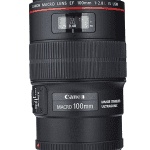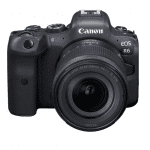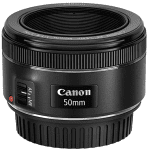What Do You Need to Start Newborn Photography? A Guide for Aspiring Photographers from a Pro
I’m taking some time to answer one of the most common questions I get in my DMs – What Do You Need to Start Newborn Photography? Let’s get your question answered and some real-world advice to start your own newborn photography business.
So, you’ve fallen in love with those sweet, squishy faces, tiny toes, and sleepy snuggles and decided to start a career in newborn photography. First of all—welcome! You’re entering one of the most rewarding and emotionally filled niches of photography. But let me be honest: newborn photography isn’t just snapping cute pictures. It’s a craft, a responsibility, and an art that requires specialized knowledge, practice, patience, and a whole lot of love for those adorable babies that aren’t always the most cooperative.
As someone who’s been in this field for years, I’m here to walk you through exactly what you’ll need to start newborn photography—what’s essential, what’s optional, and what’s absolutely a non-negotiable. Whether you’re branching out from portrait photography or starting from scratch, here’s what you need to know.
The Right Camera Gear | What Do You Need to Start Newborn Photography?
Let’s get technical first. Yes, you need a good camera, but you don’t need the most expensive one on the market to get started. What’s more important is understanding your gear and using it effectively.
Before you get into your gear, it is vital to understand the exposure triangle and how ISO, shutter speed, and aperture work together. But that is a whole different post, you can read more about tips for learning the exposure triangle here.
Camera Body:
A full-frame DSLR or mirrorless camera is ideal because it handles low-light situations better, especially if you plan on using natural light. Canon, Nikon, Sony, and Fuji all great cameras. Look for something with good dynamic range and fast autofocus. Models like the Canon EOS R6, Nikon Z6 II, or Sony A7 III are great mid-range choices.
Every photographer has their preference for camera brands, and they will die on the hill that the brand they use is the best. In all honesty, they are all pretty similar in features and quality. Personally, I use a Canon R6, but have photographer friends who use other brands, and you can’t tell the difference in image quality. Styles differ, but the technical aspects of how the camera captures and documents images are virtually the same.
Lenses:
Prime lenses with wide apertures are your best friend here. A 35mm or 50mm lens is great for lifestyle or full-body shots in tighter spaces. An 85mm or 100mm macro lens works beautifully for detailed shots—think eyelashes, fingers, and toes.
I shoot 95% of my sessions with a 50mm, lens. I use a 100mm macro for detailed images of the baby’s features. The takeaway here is that the smaller the number, the wider the frame will be. Meaning you can be close to the subject with a 35mm and fit the whole subject in the image, whereas with a 100mm you would need to be far away from the subject to fit the entire subject in the frame. I like to be close to the baby, just on the chance they startle. With a 50mm, I am never more than arm’s length away from the baby. Here is a link to my Amazon store front with links to all of the equipment I use in the studio.
Other Essentials:
- Extra batteries and memory cards: You’ll be shooting a lot—missing a perfect yawn because of a full card is a rookie mistake.
- Tripod: Optional, but useful if you’re doing composite images or family shots where you need consistency.
- Light meter: Optional, but helpful for getting consistent exposures, especially with studio lighting.
Lighting: Natural vs. Studio | What Do You Need to Start Newborn Photography?
Lighting makes or breaks newborn photography.
Honestly, of all the things you can change in post edits, bad lighting is the hardest – and at times impossible.
Natural Light:
Many photographers start with natural light. It’s soft, flattering, and doesn’t require a huge investment. All you need is a large window with sheer curtains to diffuse harsh light. North-facing windows often provide consistent, soft lighting throughout the day.
Studio Lighting:
If you plan on shooting in a dark room or want consistent results, studio lighting is worth the investment. A softbox with a continuous light or strobe paired with a large modifier like a 60” umbrella or softbox mimics natural light beautifully. Don’t forget a light stand, sandbags for safety, and a reflector or two.
I use Westcotts in the studio, a lightstand on wheels for easy lighting adjustments, and a 64 inch PLM (softbox)
Safety Training and CPR Certification | What Do You Need to Start Newborn Photography?
This is not optional.
Newborn photography is different from any other genre because your subject is fragile, non-verbal, and can’t support themselves. Posing, swaddling, and even temperature control require careful consideration.
I strongly recommend:
- Infant CPR and first aid certification. Organizations like the American Red Cross or the American Heart Association offer these courses regularly. It’s peace of mind for both you and the parents.
Remember: No photo is worth risking a baby’s wellbeing.
- Props, Backdrops, and Styling Essentials | What Do You Need to Start Newborn Photography?
Now we get to the fun stuff.
Posing Props:
- Newborn posing beanbag: The classic tool for achieving those curled-up, sleepy poses.
- Positioning pillows/wraps: These help keep the baby supported and comfortable.
- Baskets, buckets, bowls: Make sure they’re weighted and sturdy. Always have a spotter nearby or create composites if necessary.
Textures & Textiles:
- Wraps: Stretchy and breathable fabrics are perfect for swaddling.
- Blankets and flokati rugs: For layering and adding texture.
- Backdrop fabrics: Solid colors in neutral or muted tones are ideal. Avoid anything too busy.
Accessories:
- Hats, headbands, bonnets: Use sparingly, and make sure they’re baby-safe (no tight elastics or rough materials).
- Outfits: Most newborns are best photographed in minimal clothing or just a wrap. If you use outfits, make sure they’re made for newborn photography—regular baby clothes tend to bunch up or look oversized.
Pro Tip: Start small and build over time. You don’t need a storage room full of props from day one. Focus on a few quality items in neutral tones that allow the baby to be the star of the photo. Invest in props that you will continue to use over and over again, versus specialty items that are not your style or don’t see yourself using again. Here are my favorite newborn photography props.
Studio or On-Location Setup | What Do You Need to Start Newborn Photography?
You don’t need a fancy studio to start, but you do need a clean, warm, and safe space.
In-Home Studio:
If you’re setting up a studio at home, make sure it’s free from distractions, clean, and safe. A space heater, white noise machine, and soft lighting can make a world of difference in helping the baby (and the parents) feel calm and comfortable.
On-Location or Lifestyle Shoots:
Many photographers begin by traveling to clients’ homes. It’s more convenient for new parents and allows for meaningful lifestyle shots. In this case, pack light, use natural light, and communicate clearly about what kind of space and lighting you’ll need.
Studio Space:
Everyone’s goal is a studio, and trust me, it is amazing to have a space perfectly set up for newborn photography. But be realistic about it. Don’t commit to something without knowing you can fulfill the lease financially. Start small and slowly build to your dream studio. I shared my first studio space with a local photographer, and my first solo studio space was 500 square feet, on a second level of a building with no elevator, and horrible parking options. But it was mine, and perfect for me while I was there.
Education and Hands-On Experience | What Do You Need to Start Newborn Photography?
Yes, you can be self-taught to some extent—but formal or structured training will speed up your growth and improve your confidence.
Invest in Education:
- Online courses: Look for classes from experienced newborn photographers with a focus on safety, lighting, and posing.
- Mentorships: Hands-on experience with a seasoned photographer is invaluable.
- Workshops: Both in-person and virtual workshops offer a chance to see workflows from start to finish.
- Newborn posing safety workshops. Learn about circulation issues, airway safety, and how to recognize when a pose is becoming dangerous. Many industry leaders offer in-person or online workshops that prioritize safety.
The newborn online education I recommend is Hello Little Props Education Group, and Rachel Vanoven’s Collective.(link to save 20% on her class) Both are an investment, but easily the best online education available. I also recommend taking an inperson class, where an experienced newborn photographer can give you real time feedback on newborn posing.
Practice Makes Perfect:
Before charging for sessions, practice on dolls (many newborn photographers use weighted posing dolls) or offer free sessions for friends and family in exchange for permission to use the images in your portfolio. Trust me, it is WAY harder than it looks, and will take years for you to feel competent in posing.
Legal, Insurance, and Business Considerations | What Do You Need to Start Newborn Photography?
Newborn photography is a business—and a serious one. Be prepared.
Business License:
Make sure you’re legally allowed to operate in your city or state. Check with your local small business administration office.
Liability Insurance:
You’re working with someone’s most precious treasure. If anything were to happen—a slip, fall, or even an allergic reaction to a prop—you need to be protected. It is more affordable than you think. It is also required by many places that rent space to photographers.
Contracts and Model Releases:
Use a professional contract that outlines expectations, delivery timelines, safety protocols, and what happens if the baby is uncooperative or the shoot needs to be rescheduled. Model releases are also essential if you plan to use the images in your portfolio or marketing.
I send all of my contract through my CRM Dubsado. I love it so much I wrote a whole blog on why I love Dubsado for photographers.
Post-Processing and Delivery | What Do You Need to Start Newborn Photography?
Your job doesn’t end when the session does.
Editing Tools:
- Lightroom: For batch editing, color correction, and general workflow.
- Photoshop: For more detailed retouching—composite images, skin smoothing, and background clean-up.
Here is a quick overview of Photoshop and Lightroom for newborn photography.
Editing Newborns:
Less is more. Preserve texture and avoid over-smoothing. Focus on softening flakes and redness while maintaining the baby’s natural features.
Gallery Delivery:
Use professional platforms like Pixieset, ShootProof, or SmugMug to deliver your final galleries. Offer digital downloads, prints, and albums for added revenue.
I use Pixieset for photography session gallery delivery.
Client Communication and Experience | What Do You Need to Start Newborn Photography?
This might be the most important part of the whole process.
Prepare Clients in Advance:
Send a prep guide that explains how to get baby ready, what to wear, and what to expect. Communicate clearly about session length—newborn shoots can take 2–4 hours due to feedings, changes, and comforting.
During the Session:
Be calm, confident, and gentle. Your energy affects the baby. Be flexible—sometimes you’ll need to pivot from a posed session to a lifestyle one, depending on how the baby is doing. Flexibility is key with babies.
After the Session:
Stay in touch, set clear delivery timelines, and provide information on how to order products or prints. I send out a “What to Expect After Your Session” email that covers all of the things related to what happened after the session and what they can expect from me.
Final Thoughts | What Do You Need to Start Newborn Photography?
Newborn photography is not for the faint of heart—but it’s also one of the most beautiful and fulfilling photography paths you can choose. I get to snuggle babies and give moms images of their new baby that literally make them cry.
You are preserving a moment in time that passes in the blink of an eye. With the right training, equipment, mindset, and compassion, you can build a business that not only provides for you financially but also enriches the lives of the families you photograph.
Start with the basics. Focus on safety. Learn constantly. And never forget the honor it is to be trusted with capturing life’s earliest memories.
You’ve got this – And feel free to reach out with questions.



